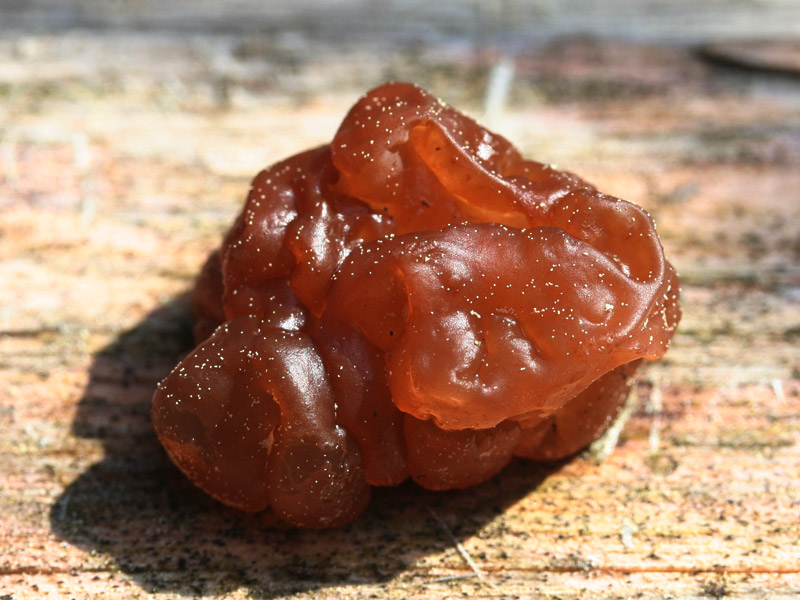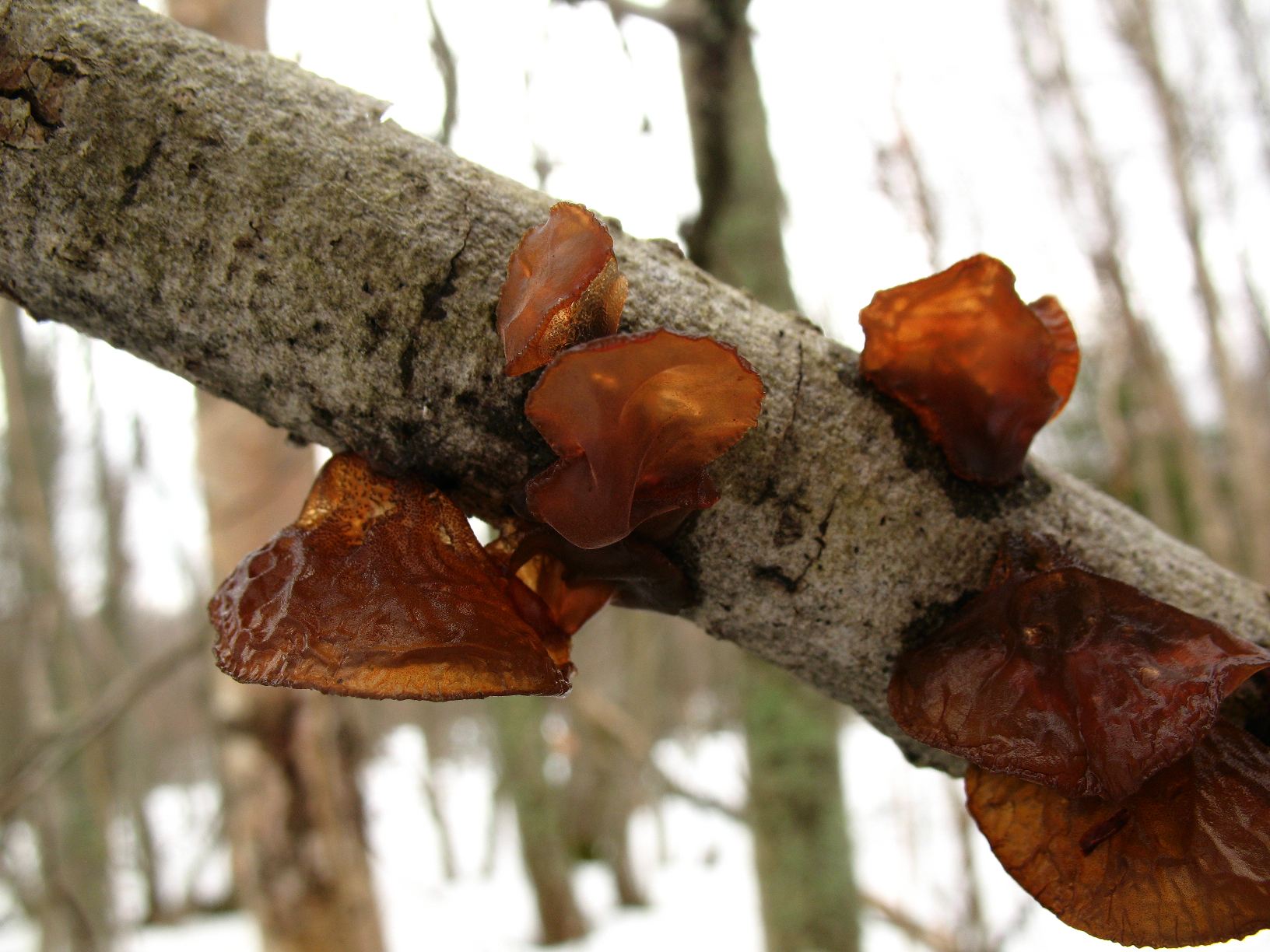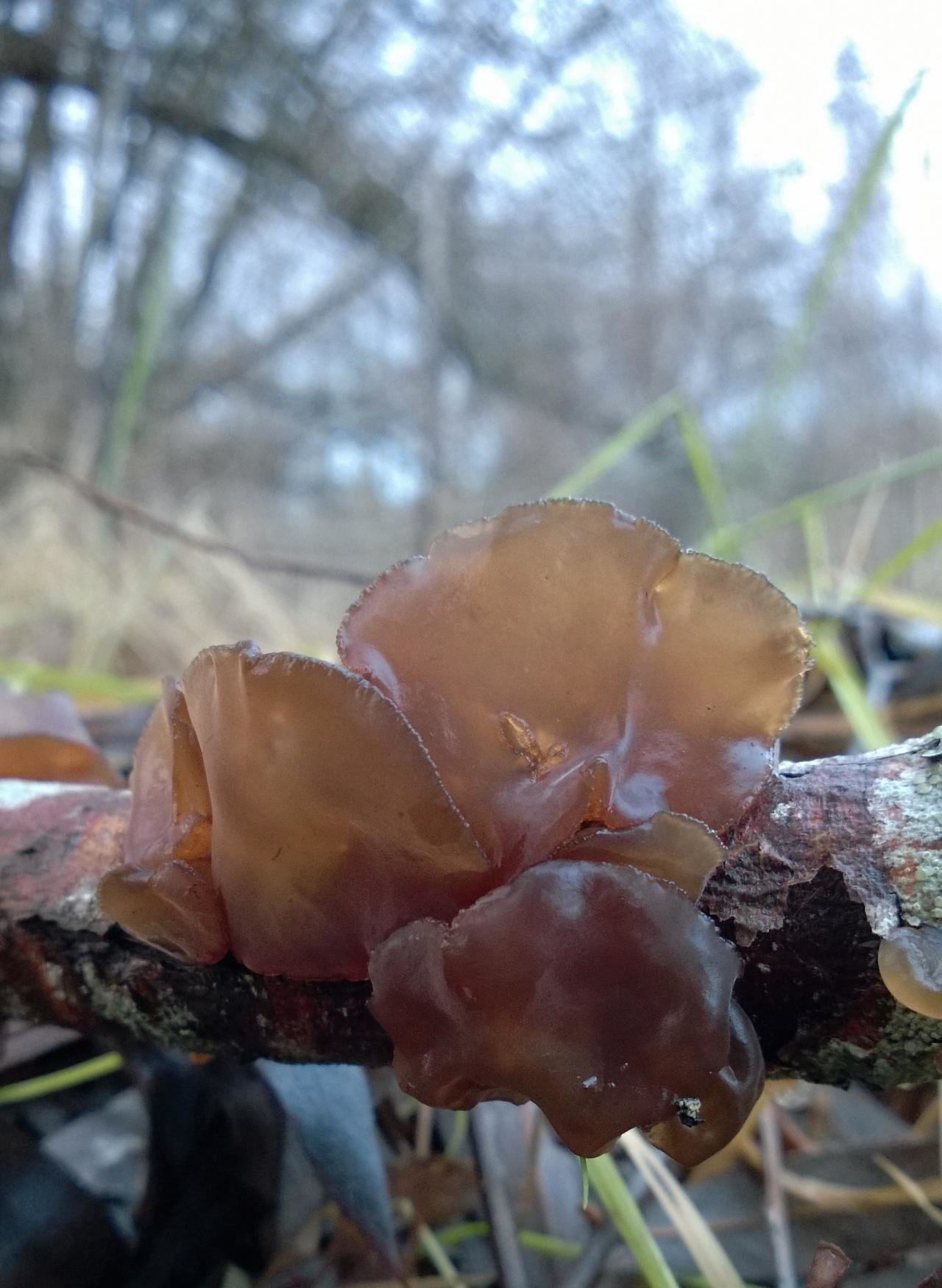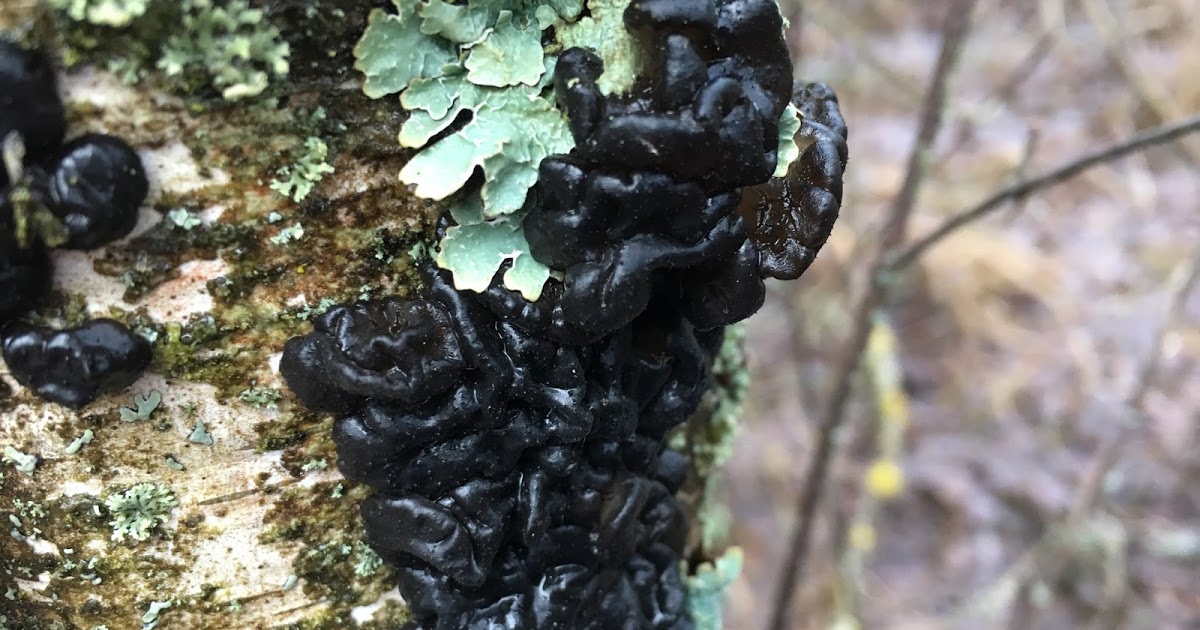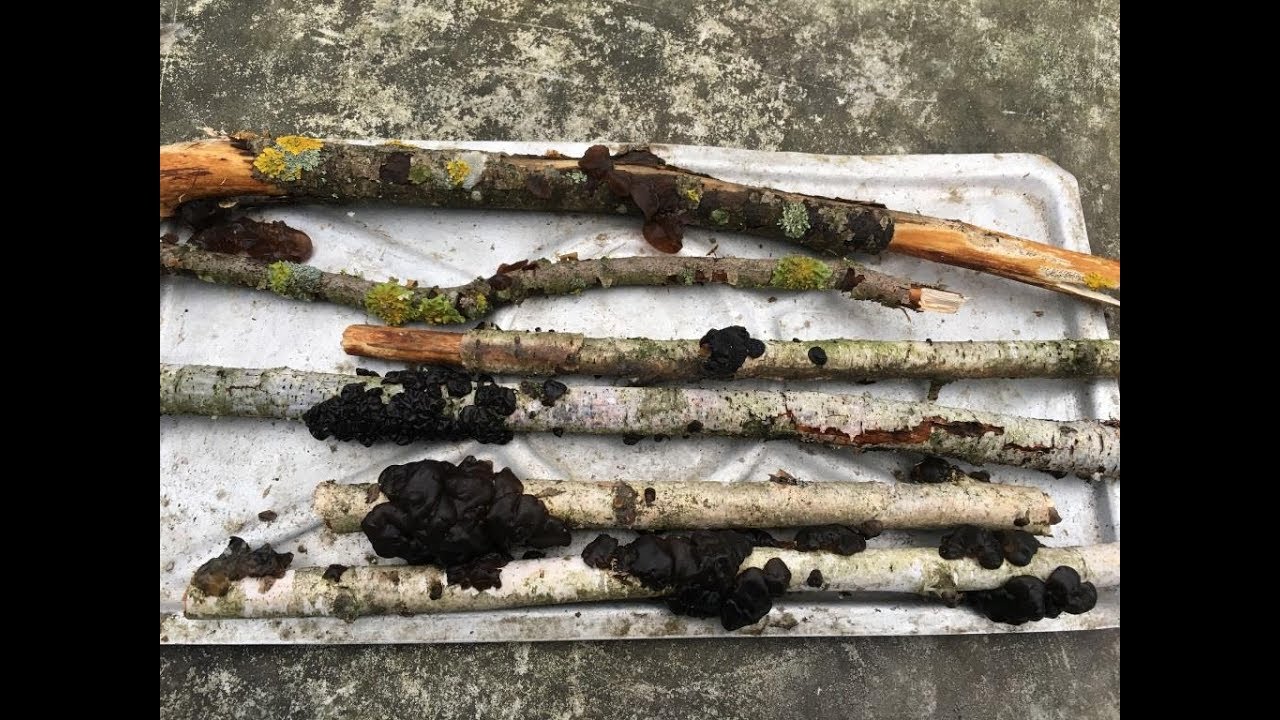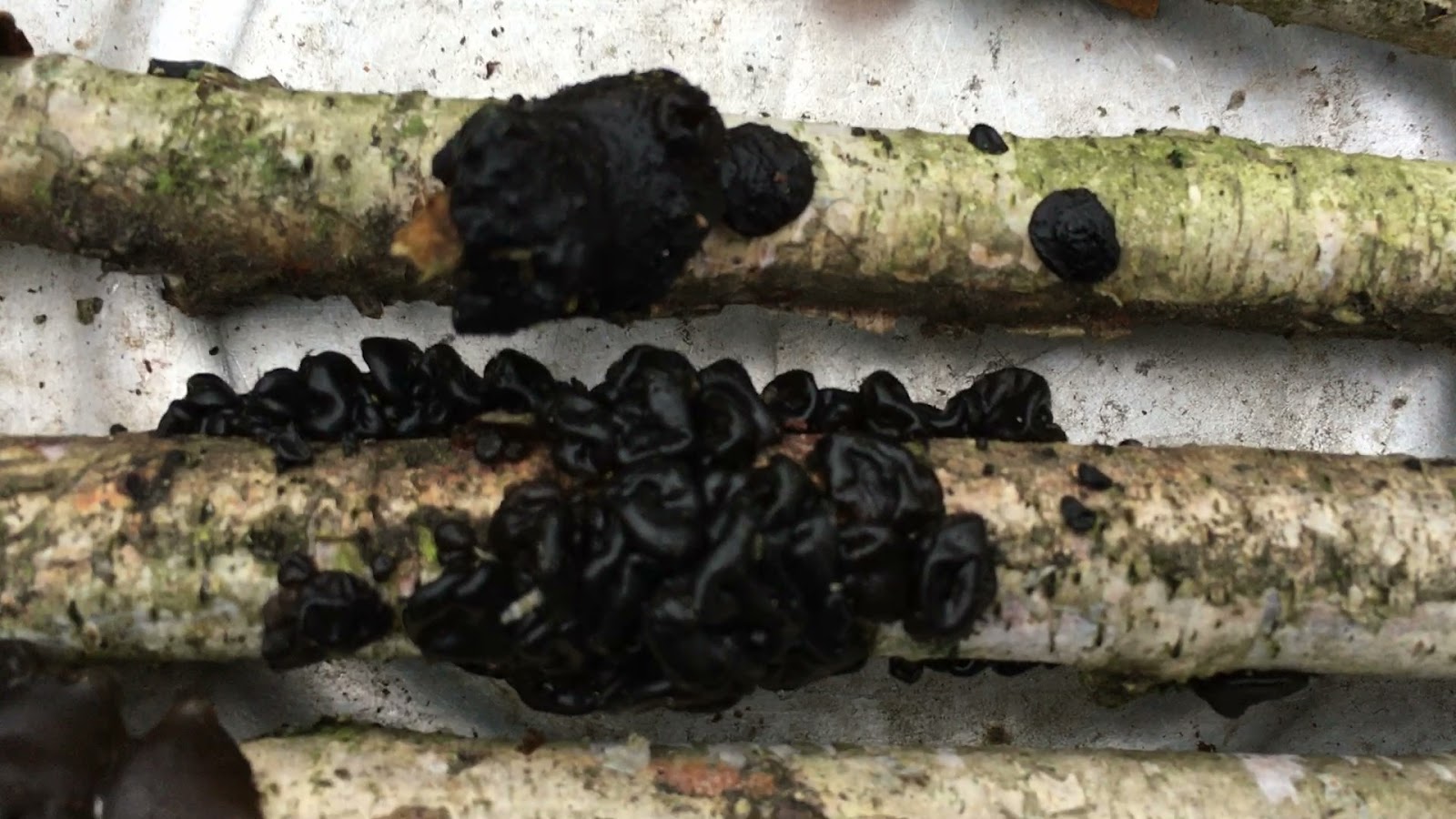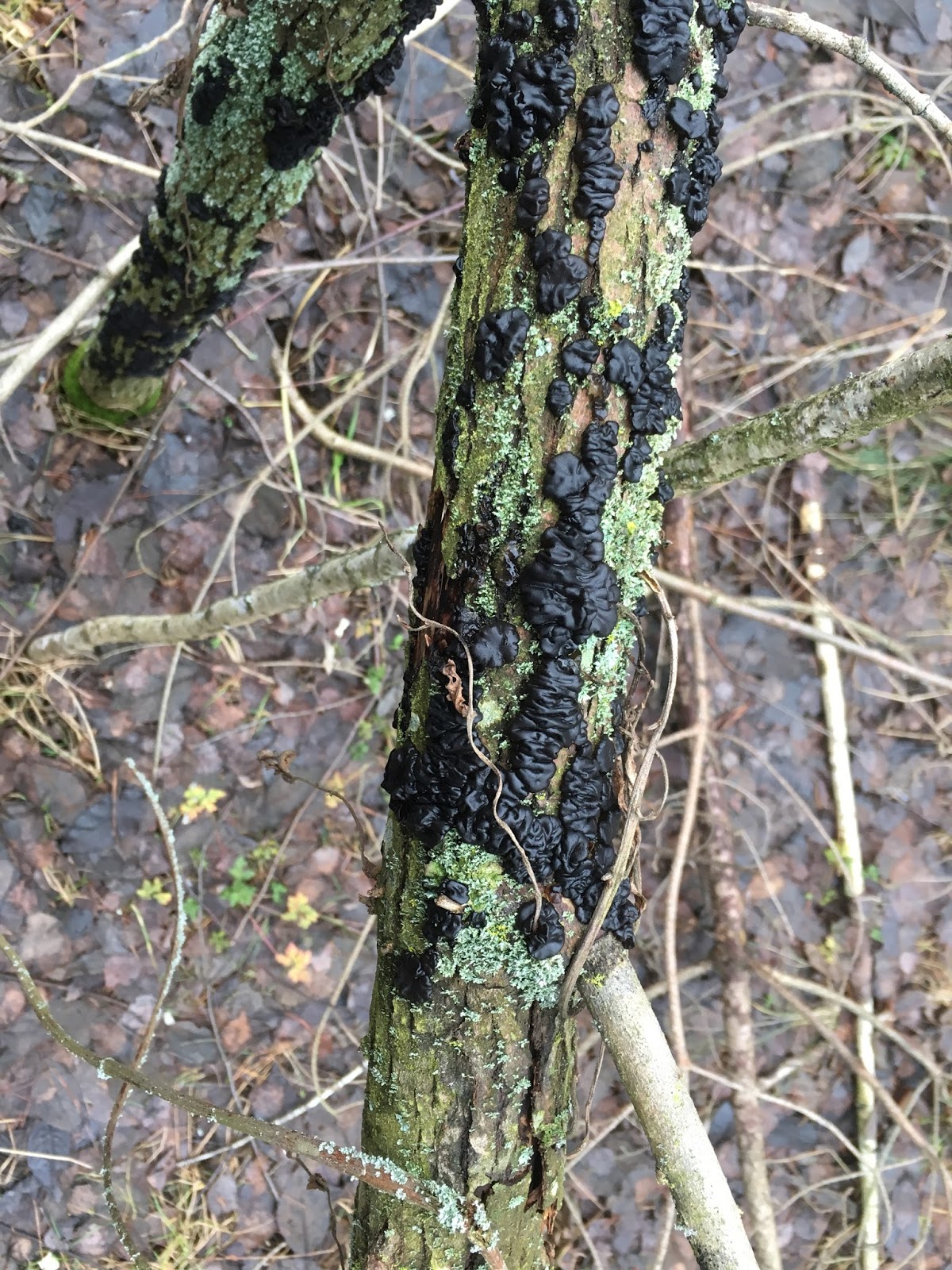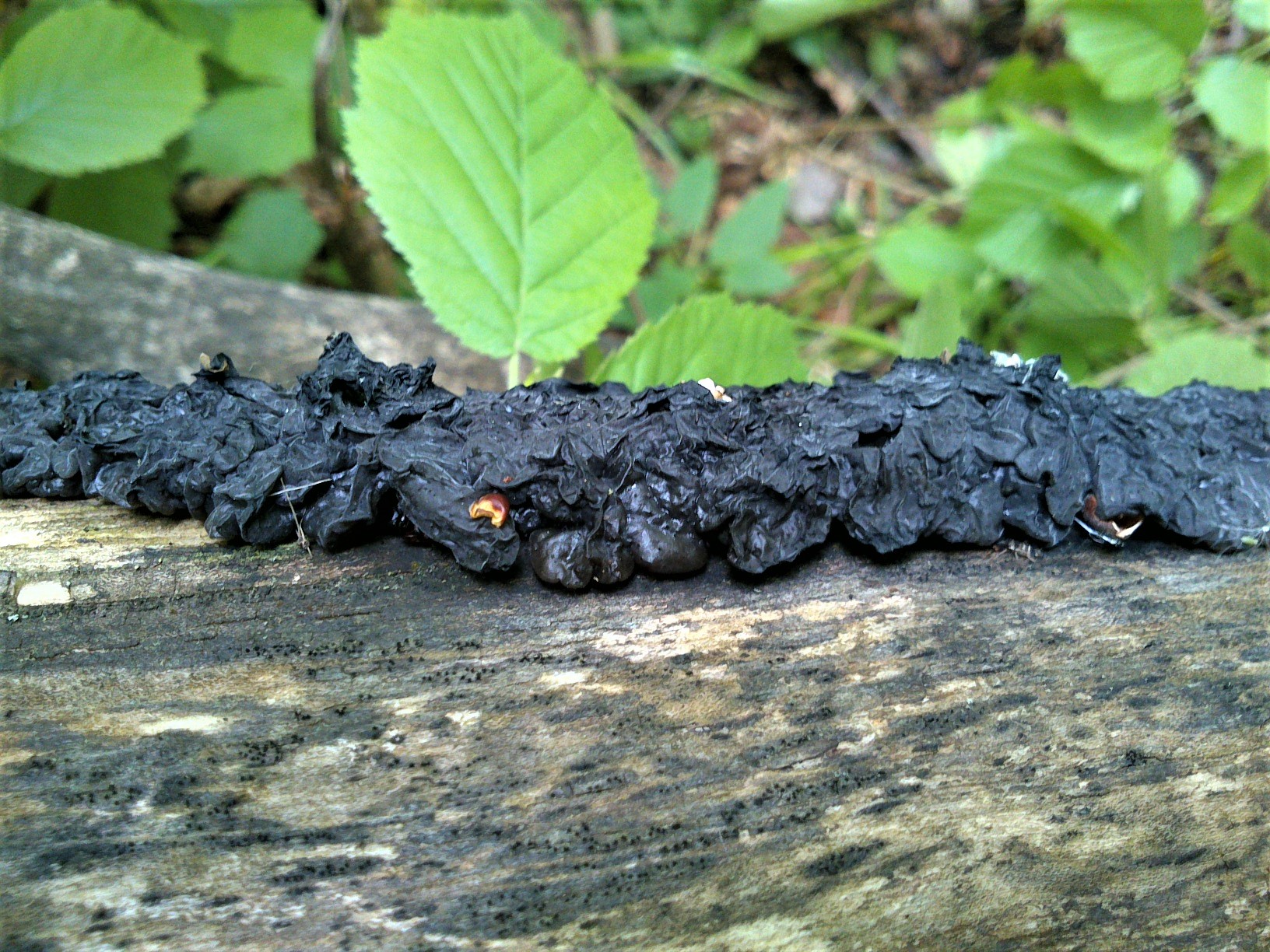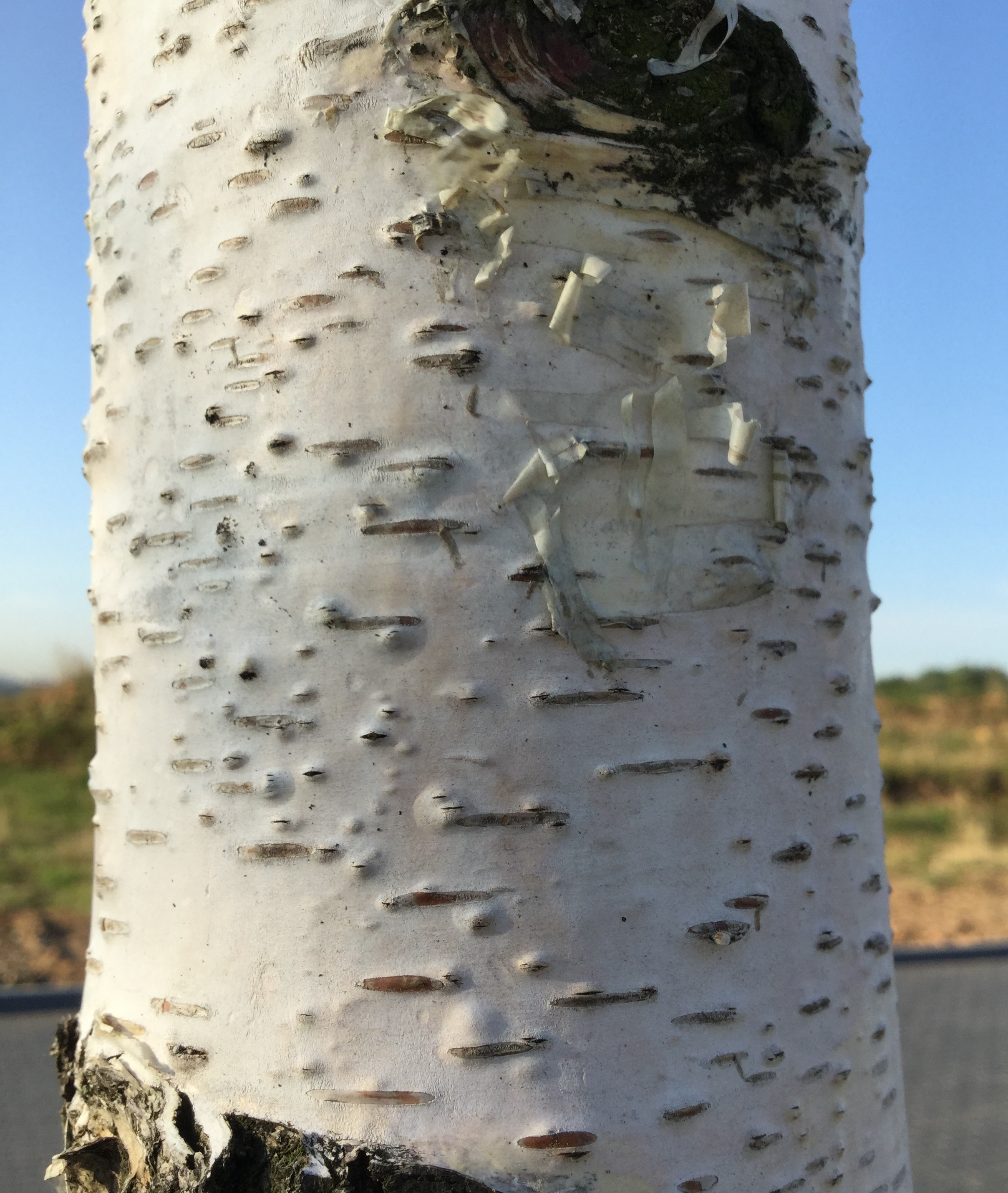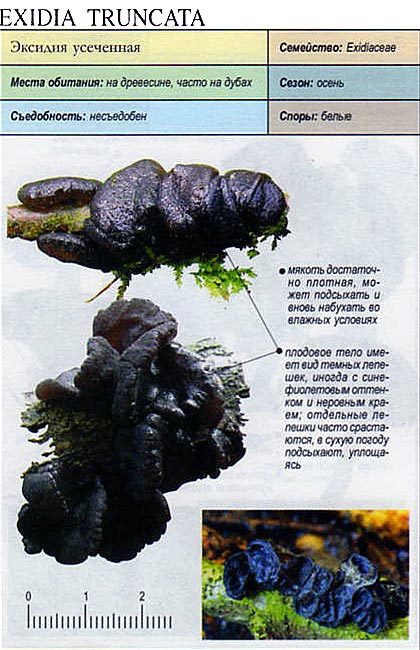Exidia compressed: photo and description
| Name: | Exidia compressed |
| Latin name: | Exidia recisa |
| Type of: | Inedible |
| Synonyms: | Tremella recisa, Tremella salicus |
| Specifications: |
|
| Systematics: |
|
Compressed exidia is a poorly studied mushroom, which, perhaps, only avid mushroom pickers know about. What are these gifts of the forest, it is worth finding out before the start of the "quiet hunt".
What does Exidia look like
The mushroom resembles a closed shell with a barely noticeable stem 2-3 cm long. The fruit body is erect, rounded, leaf-shaped, compact, disc-shaped, or in the form of an inverted cone. As a rule, the surface of a young exidium is compressed smooth, but over time it becomes folded and wrinkled.
Color - from yellow and amber shades to red-brown, and when dry, the pulp begins to turn black. The edge of the fruiting body is wavy-wrinkled. It is characterized by an expressionless taste and smell.
Basidia are tetrasporous with a buckle at the base and long cylindrical sterigmas, reaching sizes of 10-13 × 7-10 microns. Spores 12-14 × 3-4 μm, thin-walled, hyaline, allantoid with a pronounced apex.
Is the mushroom edible or not
Mushrooms of this genus have several varieties, some of which are edible. However, this specimen belongs to the group of inedibles, but is not considered poisonous.
Where and how it grows
You can meet this species on dead deciduous wood that grows along rivers and lakes.
The variety is widespread throughout Russia, and the favorable time for their growth is from July to September. However, in some parts of the country with a mild climate, this specimen continues to grow continuously.
For example, in the southern region of Russia, where frosts reach a maximum of -10 degrees in winter, fungi do not die. And at above-zero temperatures, they continue to develop and form spores. In those regions where winters are more severe, for example, in the European part, exsidia winters successfully and begins to grow immediately after the thaw.
In dry weather, the fruit bodies dry out, acquiring a black tint, turning into hard thin crusts, the viability of which is several years in herbarium conditions. However, with heavy rain, the mushrooms return to their original form.
Doubles and their differences
There are several types of mushrooms that are considered twins of the Compressed Exidia:
- Exidium glandular - resembles compressed in shape and color. Nevertheless, the glandular has a more saturated black color, and small warts can be seen on the surface of the fruiting body. This doppelgänger is believed to be an edible and delicious mushroom.
- Truncated exidia - similar in color and shape. You can distinguish a double from a real one by the presence of a velvety lower surface and small warts on its fruiting body. They are classified as inedible.
- Exidia blossoming - has a similar color and rounded flattened fruiting bodies. However, it will not be so difficult to distinguish a twin from a compressed exsidium, since most often it grows on a birch. This variety is never found on willow. It is an inedible species.
- Leafy shiver - similar in shape and color to fruit bodies, but this species is quite rare and grows on stumps. Experts classify it as inedible and do not recommend using it for food.
Exidia
Exidia glandular Exidia compressed
Exidia is a widespread species of the large Auriculariaceae family; these mushrooms grow in Russian forests almost everywhere. They have a pulp similar to dense jelly and an indefinite shape of fruit chalk. They have a characteristic feature, they dry out in heat / drought, in cool rainy seasons they swell again and grow actively. Therefore, they become noticeable only in autumn and spring, although they can appear in cold, damp summers.In our region, two species are often found, both prefer alder-willow thickets, I have tasted (raw!) No taste at all!
Exidia glandular (Exidia glandulos)
Exidia glandular on birch
It is sometimes called glandular tremor. Actually, it does not look like mushrooms at all, fruiting bodies are born in the form of shapeless dense gelatinous tubercles densely adhered to wood. Growing up, as a rule, they merge into irregularly rounded or elongated blotches with clearly defined edges. The surface is glossy with numerous winding folds and peculiar rounded mini outgrowths (lat. Carrier glands).
Elastic flesh, odorless and absolutely tasteless. Colors of all shades of brown and black. Spores form over the entire surface of the fruiting bodies; therefore, drying mushrooms are often covered with a whitish spore powder. They grow on fallen trunks and thick branches of deciduous trees. Drying, they turn into a thin smoothed crust. Exidia glandular is edible and they write that it even has medicinal properties. Only eat raw!
Exidia compressed (Exidia recisa)
In Latin, "recisa" stands for abbreviation
Exidia compressed on aspen
Compressed exsidia mushrooms are compact, small (1 - 2.5 cm). Fruit bodies are rounded, wrinkled, with uneven edges and tiny, barely noticeable legs or a narrowed base. The outer surface is matt, the inner spore-forming is smooth and shiny. mobile pulp is translucent, thin, without any taste or smell. The color of the fruit bodies is brownish-yellow, orange-brown or reddish-brown, usually grows in small families, but usually does not form intergrowths. When dried, compressed significantly decreases in size, shrinks, becoming a dull dark brown color. Grows on decaying deciduous trees / branches, preferring willow trees. These nondescript woody mushrooms have hardly been studied, so their edibility is not known. Poisonous species are not described among exsidia, they are simply not edible due to their small size, unappetizing appearance and hard gelatinous pulp.
Genus: Exidia (Ex> Main Fungi Bas> Exidia
Exidia is a genus of fungi of the Auriculariaceae family.
Etymology
Exidia, Exidia. From lat. exsudo, avi, atum, are, go out, stand out.
Typical view
Description
Fruit bodies are varied in shape (from cushion, disc-shaped and fusiform to sinuous, lobed and prostrate), as well as varied in color (from almost colorless, white and yellowish to various shades of brown and black). The surface of the fruit bodies is smooth, wrinkled, or covered with tubercles. The consistency of the fruiting bodies is soft or densely gelatinous or cartilaginous. The hymenium is covered with an epigymenal membrane. Fabric hyphae with buckles. Basidia are almost spherical, ovate or ellipsoid, 4-spore, cruciform-septate. Spores are smooth, hyaline, allantoid.
They grow on deciduous and coniferous wood.
Key for identifying species of the genus Exidia distributed in Russia
1. Fruit bodies are black → 2.
- Fruit bodies of a different color → 4.
2. On conifers → Exidia pithya.
- On hardwoods → 3.
3. Fruit bodies are cushion-shaped, irregular in shape, merging into a single mass with the loss of isolation → Exidia nigricans.
- Fruit bodies are compact, discrete, which, even if they form groups, never merge into a single mass with the loss of isolation of individual fruit chalk. Occurs on broadleaf species → Exidia glandulosa.
4. Fruit bodies are hyaline, white or yellowish → 5.
- Fruit bodies of brown shades → 7.
5. Fruit bodies are two-colored, with a dark central part and light margins → Exidia cartilaginea.
- Fruit bodies are uniform in color → 6.
6. Fruit bodies are transparent or milky-white, merging and spreading over the substrate up to 10-15 cm. Spores 13-19 × 4.5-6 µm → Exidia thuretiana.
- Fruit bodies are off-white or brownish-yellow, small (up to 1.5 cm wide and 2-3 mm thick), never merging. Spores 16.5 - 19 × 3.5 - 5 μm → Exidia compacta.
7. On conifers → Exidia saccharina.
- On hardwoods → 8.
8. Spores over 16 µm in length → Exidia brunneola.
- Spores less than 16 μm in length → 9.
9. Fruit bodies are button-shaped, flattened → 10.
- Fruiting bodies in the form of an inverted cone with a short stem → Exidia recisa.
10. On oak wood (Quercus) → Exidia uvapassa.
- On wood of small-leaved species → 11.
11. Spores up to 4 µm wide → Exidia repanda.
- Spores 4 - 5 µm wide → Exidia badioumbrina.



